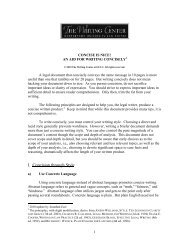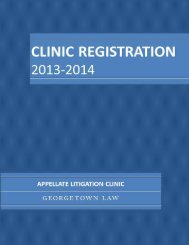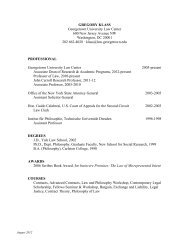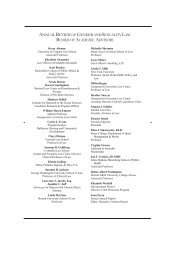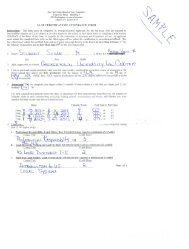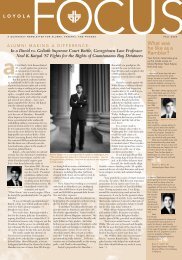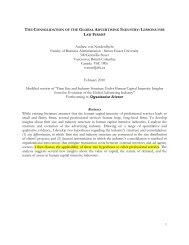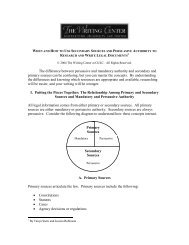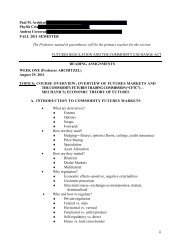Date: April 12, 2013 Topic: The Shrinking ... - Georgetown Law
Date: April 12, 2013 Topic: The Shrinking ... - Georgetown Law
Date: April 12, 2013 Topic: The Shrinking ... - Georgetown Law
You also want an ePaper? Increase the reach of your titles
YUMPU automatically turns print PDFs into web optimized ePapers that Google loves.
incentives. Yet, a strong legal expertise within the firm is required in order to identify such<br />
opportunities and fully capture their benefits (Bagley, 2008). As Marchant et al. (1999)<br />
explain, legal expertise largely relies on tacit knowledge of the context and past experience<br />
with the specifics of the situation. Hence, frequent interaction between the corporate legal<br />
department and, say, the corporate accounting department (for international tax planning) or<br />
the strategic planning department (for foreign direct investment or M&A) is likely to create<br />
important benefits for international firms through the identification and realization of<br />
unexplored opportunities. Hence, the potential to exploit opportunities from the cospecialization<br />
of legal with other resources, arising from multi-jurisdictional international<br />
presence, is likely to favor more ‘make’ in the plural sourcing of legal services. Thus:<br />
H1: <strong>The</strong> more internationalized a firm is, the greater its reliance on the internal<br />
sourcing of legal services.<br />
R&D intensive firms<br />
Besides international firms, we also expect R&D intensive firms to rely more on their<br />
internal legal departments. Firms investing in new technology must choose an appropriate<br />
strategy to appropriate gains by protecting their intellectual property, for example by<br />
choosing between secrecy and patenting. Exactly what to patent and how to patent is a knowhow<br />
that arises from the co-specialization of legal and technical knowledge. Internal patent<br />
lawyers tend to be highly knowledgeable about the company’s unique technologies (Somaya<br />
et al., 2007). <strong>The</strong>y can interact with the firm’s R&D department to discuss patentable ideas<br />
from an early stage and thus help to increase the share of the value appropriated from<br />
innovation. For example, Reitzig et al. (2009) have found that intermediate levels of crossfunctional<br />
involvement between the legal and R&D department increase the speed of patent<br />
grants. In addition, in-house legal expertise has been found to increase patenting output as<br />
firms are able to identify patentable inventions more effectively (Somaya et al., 2007).<br />
<strong>12</strong>



